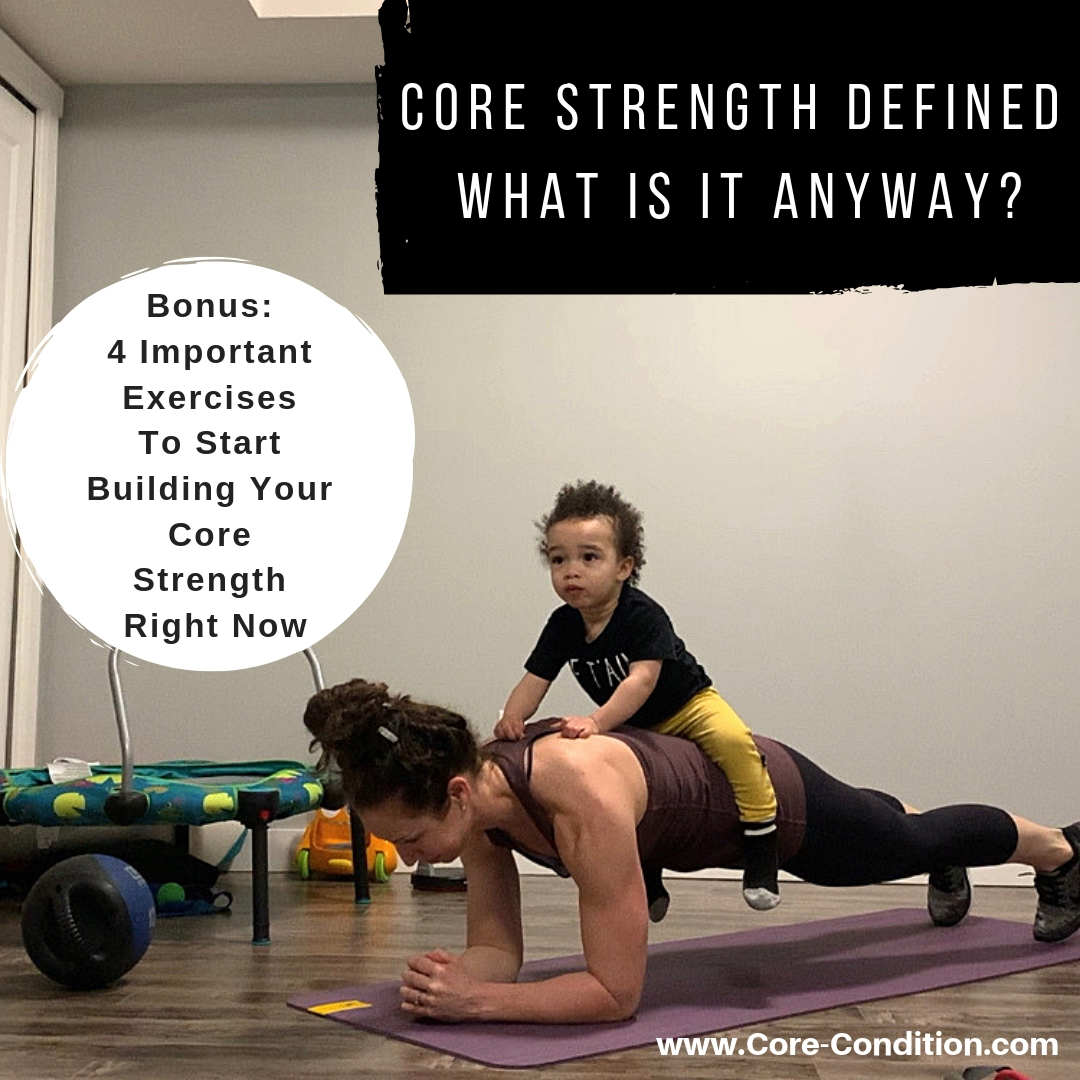- 604-362-9571
- Monday - Sunday
Blog

CORE Strength Defined – What Is It Anyway?
- by Michelle
- April 23, 2019
“Core: the central, innermost, or most essential part of anything” — www.Dictionary.com
A popular buzz word in the fitness industry these days is “core”; however, this word is very commonly misunderstood. Many people think of the abdominal region of the body or the well known “6-pack” when they hear the word core; however, this is a common misconception because overall core strength actually involves many different muscles working together to stabilize the spine and pelvis. This includes the muscles of the pelvic floor, the transverse abdominis (TVA), obliques, latissimus dorsi, erector spinae, and the hip flexors, to name a few. The combination of all of these muscles working in good order creates a strong and a stable base to control movements, transfer energy, and prevent injury. Whether you are running, walking, or bending over to pick something up, it is the muscles of the core that work to stabilize the body and maintain proper balance, which in turn, helps to prevent injury.
I like to think of the core as the body’s foundation; therefore, having a weak link in the body is just like having a weak foundation in a building. Once force is applied to that building in a certain way it will collapse due to a weak link, the same theory applies to the body and associated injury. A common injury related to poor core strength is low back pain. If an individual has imbalances throughout the core musculature or these muscles lack strength, excessive load can be placed on the low back often causing discomfort or injury. This could be due to an increase in the natural lumbar curve causing a “swayback” type posture and a forward tilt positioning of the pelvis.
There are many exercises that can be performed without any equipment to begin to build core strength. Here are three examples of exercises that can be done to learn how to properly “engage” the core muscles and build strength and stability in the torso:
Remember, strengthening all the core muscles is important, but teaching them all to work together is most important!

4 Important Exercises To Strengthen Muscles of The Core
Pelvic Tilt– Begin by lying on your back with knees bent and feet flat on the floor. Tighten your abdominal muscles by pulling your naval in towards your spine and push your low back into the floor. Hold this contraction for 5 seconds, release, and repeat 10 times. This mainly target’s your transverse abdominis muscle, just be aware not to hold your breath during the contraction phase of the exercise.
Try this exercise below to make the pelvic tilt a little bit more difficult!
Bridge– Begin by lying on your back with knees bent and feet flat on the floor (be sure your feet are placed under your knees). Perform the pelvic tilt, contract your buttocks, and raise your body up until you have created a straight line with your body from your knees to your shoulders. Hold for approximately 10 seconds at the top and then lower back down to the floor and release the pelvic tilt. Perform 2 sets of 10 repetitions.
Side Lying Leg Raise – Being by lying on your side and make sure your hips are stacked perpendicular to the floor. Perform both the hip abdution and hip adduction exercises displayed in the video below.
Quadruped – Be sure you squeeze your core and go very slowly so that you can control any compensations. Watch for an arch in your lower back or an overcompensation in the opposing hip of the leg that is raised up. When perform correctly this is a great example of teaching all the muscles of the trunk to work together without compensations.
Want a more challenging Workout? Check out this at home core workout
OR TRY THIS Full Follow Along Beginner Core Workout On My YouTube Channel!
So remember, if you are looking to begin a core strengthening program, be sure to select functional exercises that involve a number of core muscles working together to avoid unwanted muscle imbalances. Steer clear of crunches and incorporate different types of equipment challenging balance and stability, such as a wobble board or a stability ball. If you suffer from low back pain obtain approval from your doctor or specific exercise prescription from a certified professional prior to beginning a core strengthening program.
Michelle Roots BA Kin, CSCS
Follow On Instagram for More Tips and Daily Motivation! @MICHELLEROOTSFIT






